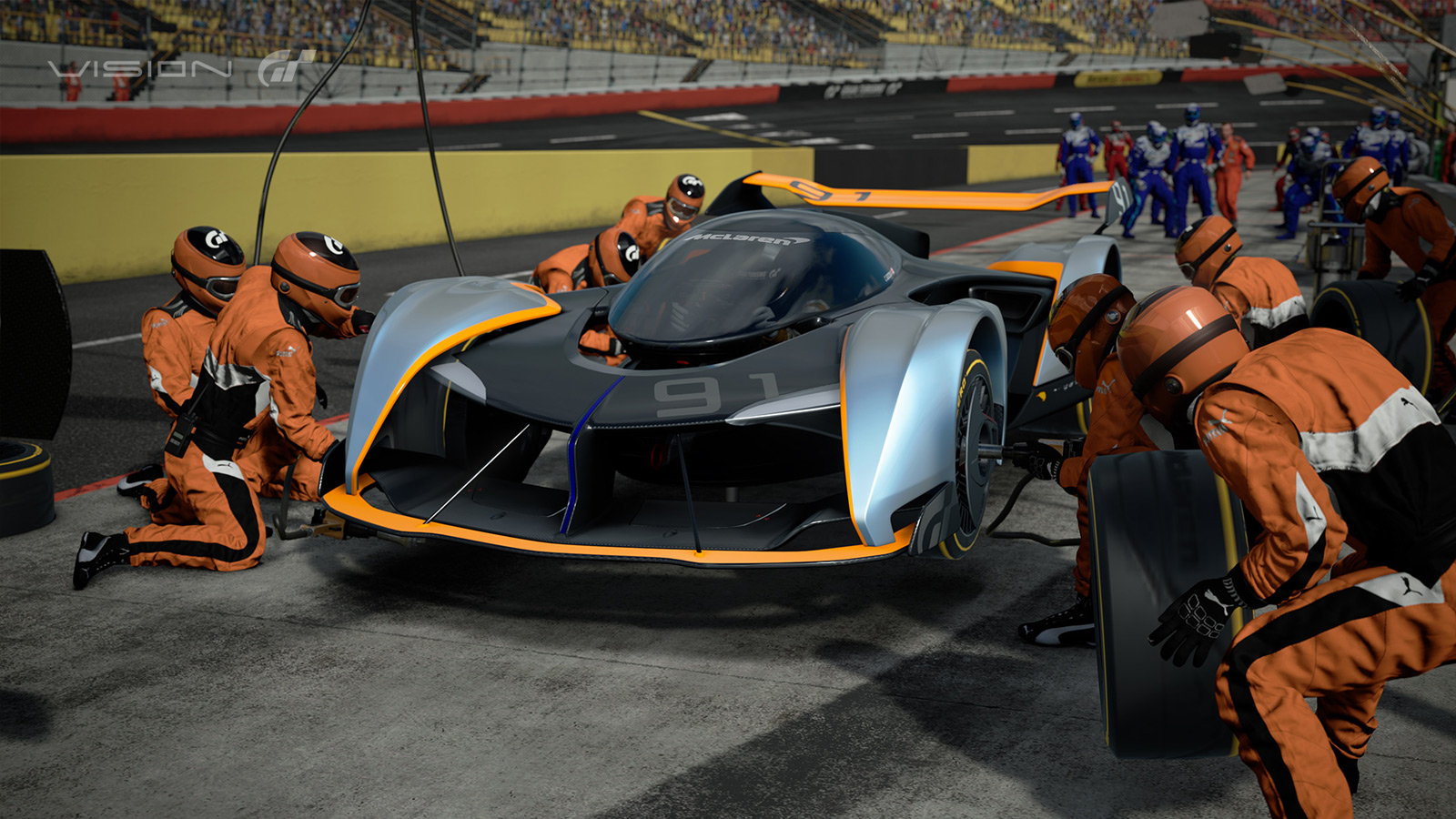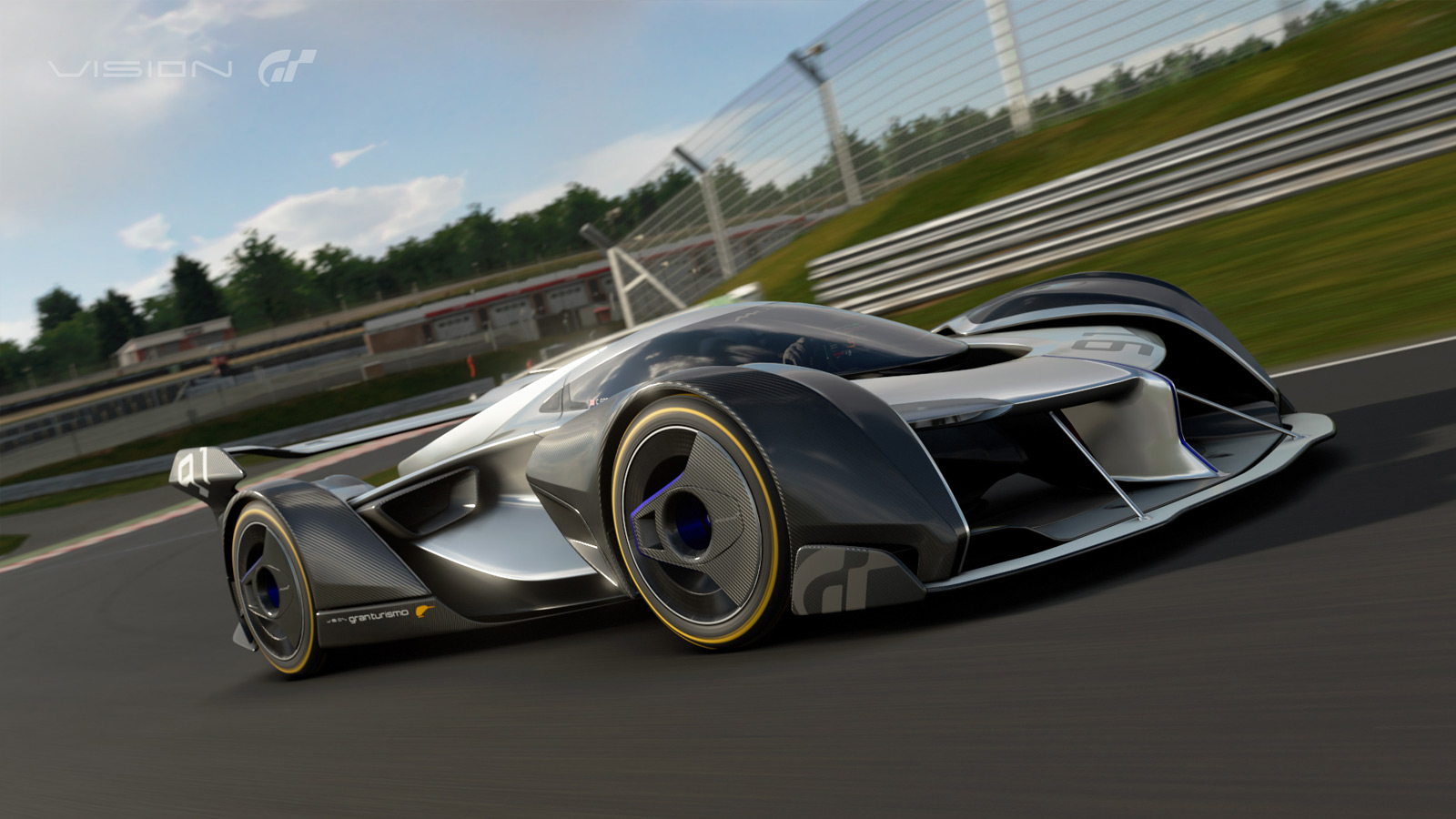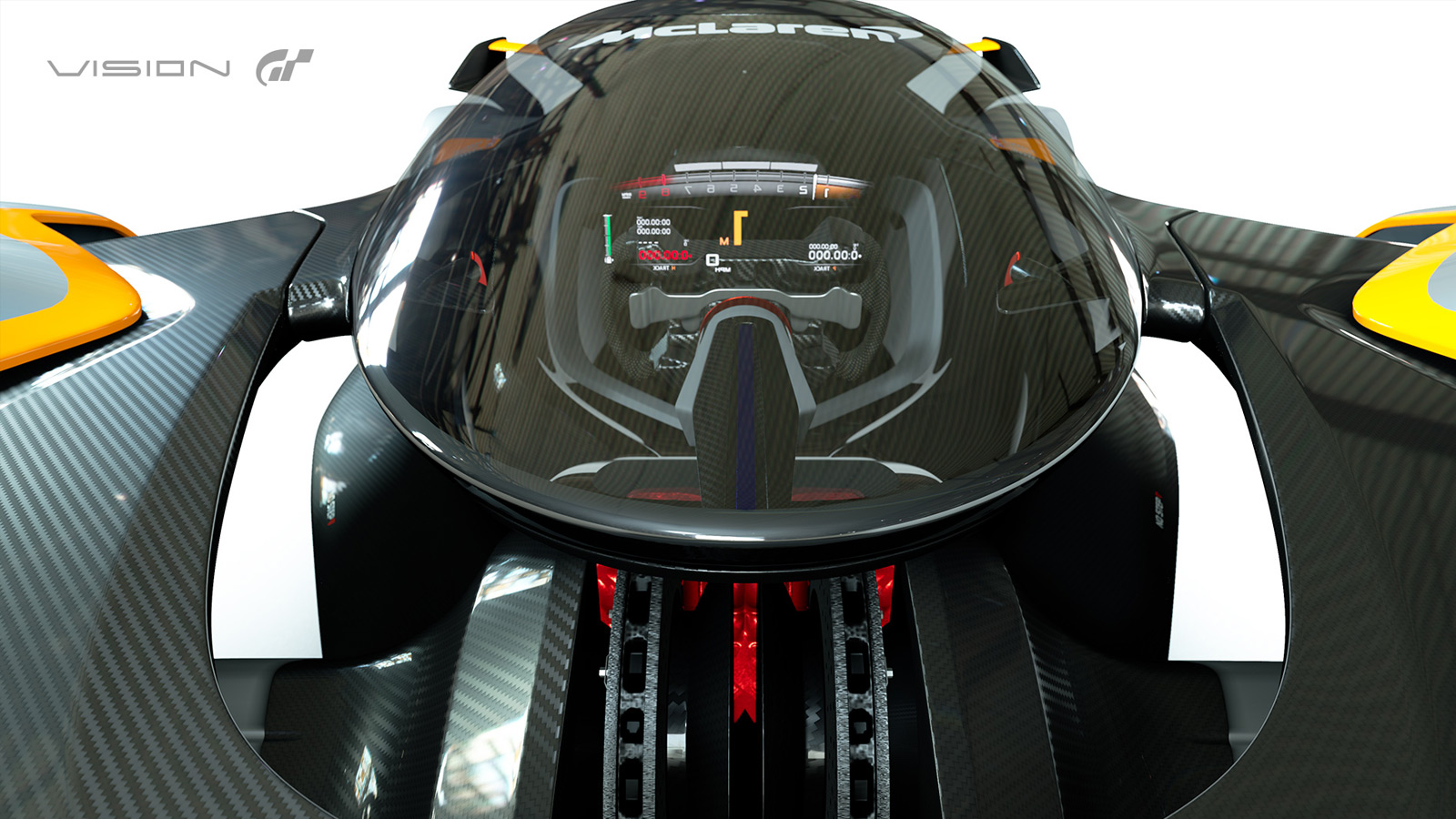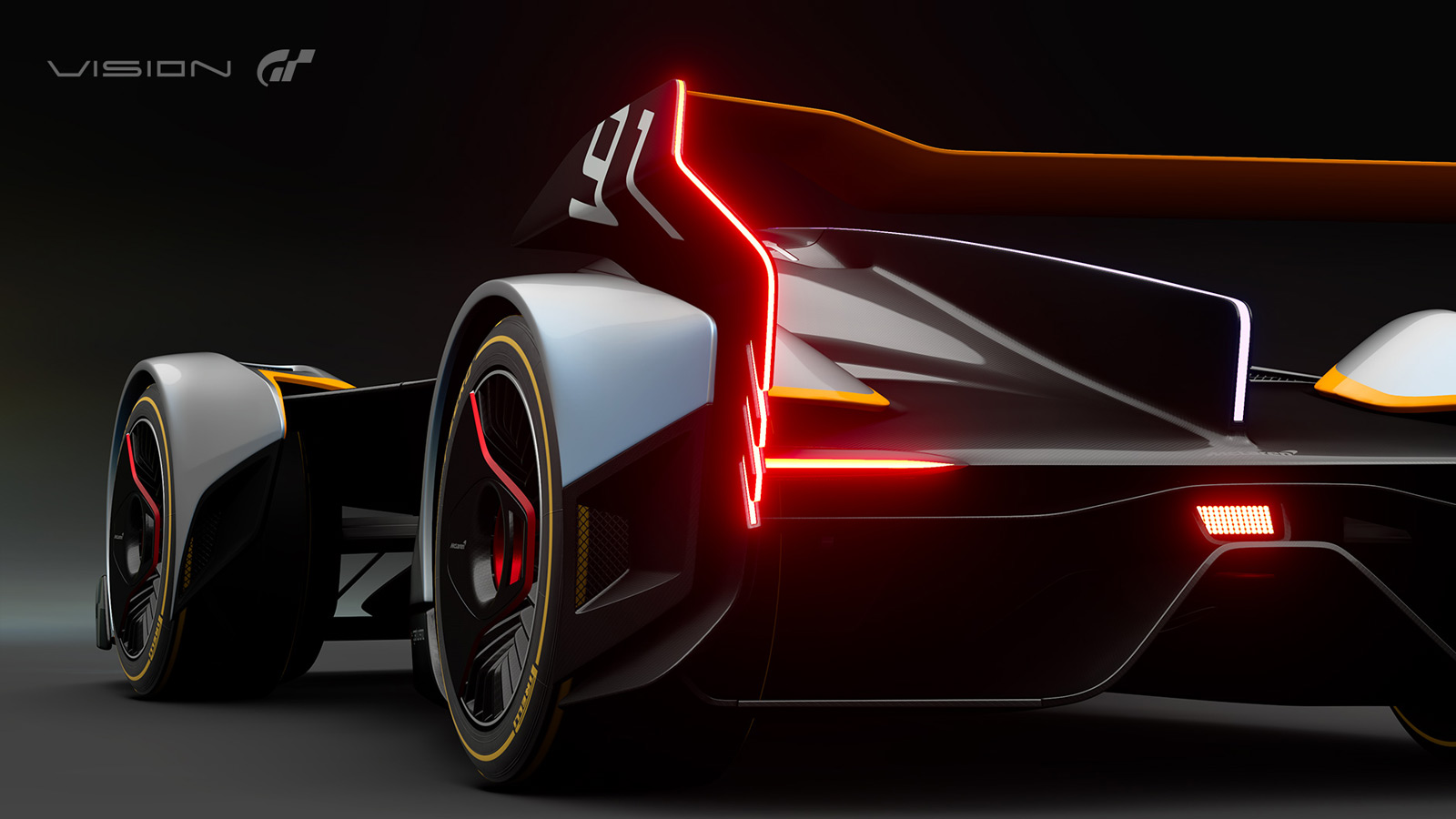The Gran Turismo series of games has a unique relationship with the automotive industry, acting as both advert and proving ground for many designs over the years. Although there is no guarantee that McLaren’s new hybrid vehicle will ever make the leap into the real world, if the Ultimate Vision’s looks and performance could be anything like they appear in game, we’re sure there would be an audience for it.
The hybrid setup comes complete with a bi-turbo 4.0-liter V8 engine which powers the back wheels, paired up with electric motors in each of its front wheels. All together this delivers as much as 940 pound-feet of torque and 1,135 horsepower.
What’s more impressive than the hardware under the hood though is the car’s aerodynamic styling. Designed, as Motor1 describes it, as the vision of a high-powered hybrid of the future, the Ultimate Vision Gran Turismo leverages every inch of its bodywork to redirect air where it’s most needed. Tiny apertures around air inlets can also open and close, delivering drag and downforce as required.
When combined with the use of carbon fiber for to economize on weight, the final version (virtually) weighs in at 2,200 pounds, much less than the P15 and P1 — it’s no wonder the end result is exceedingly fast.
It even comes in three different livery options, letting you pick between “Performance,” “Ulterior,” and “Noir.” Whichever you opt for though, drivers should have a unique perspective with this forward-thinking vehicle, as its cockpit is tear-drop shaped with a deep glass screen that delivers an unprecedented field of view for players.
“The design form communicates exactly what the car’s mission is and what its intentions are: it’s the ultimate expression of the McLaren design pillars and principles we have already established, futured into the 2030s,” said design director at Mclaren Automotive, Rob Melville.
It’s possible that none of what’s shown off in McLaren’s design of such a vehicle will ever translate to the real world. However, it seems certain that some of the modern design practices it leveraged in creating the Ultimate Vision GT, such as virtual reality, will continue to be used for future vehicles, real or no.
Gran Turismo Sport will release exclusively on PS4 on October 17.







